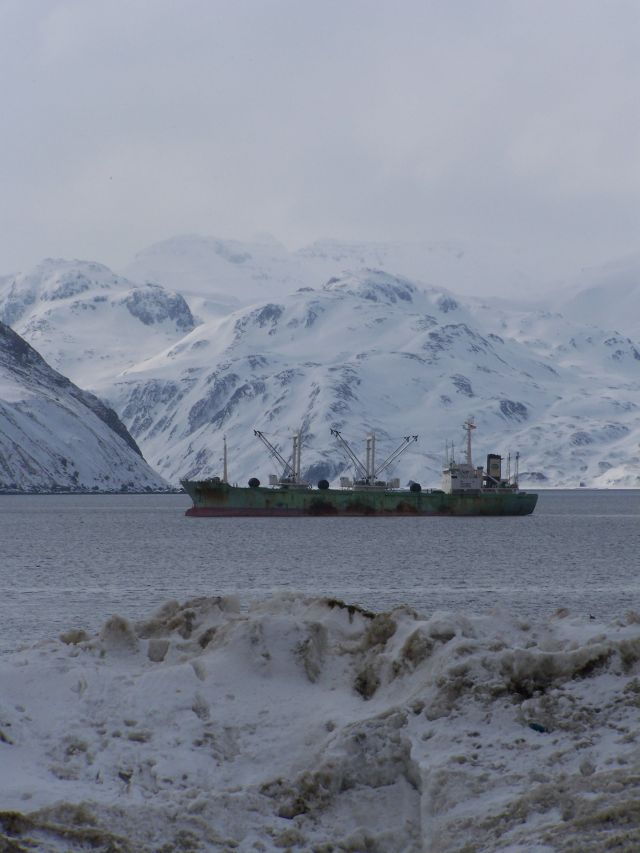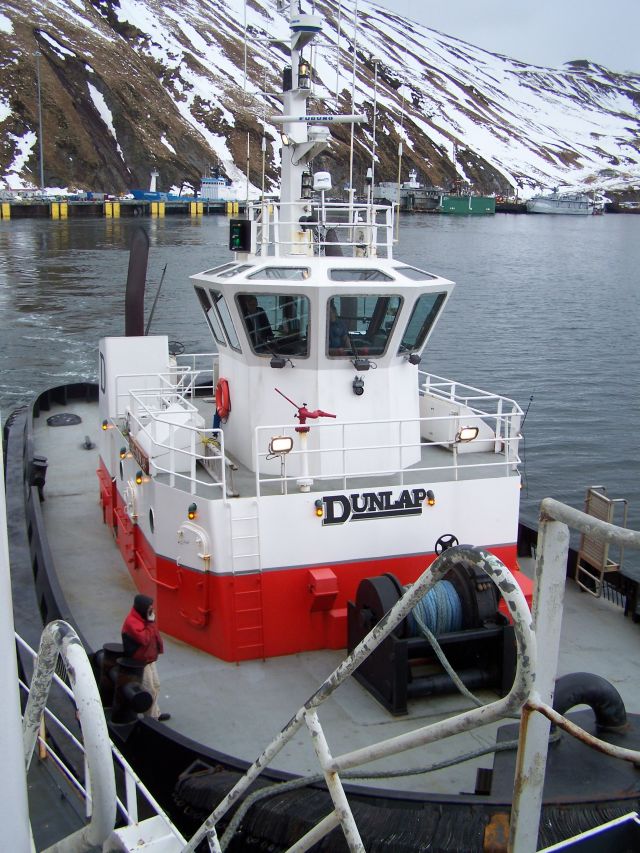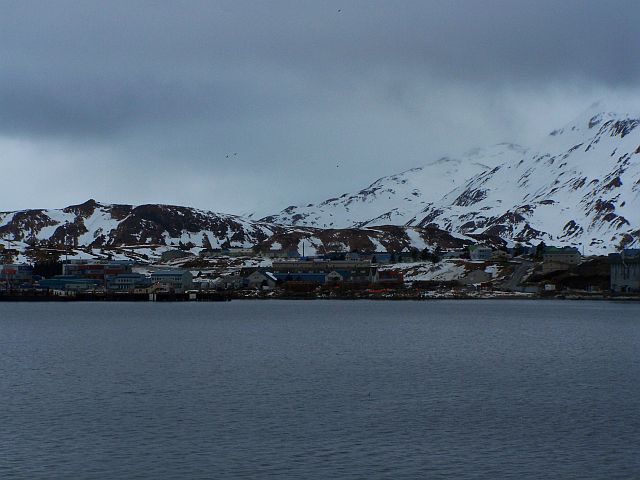We safely arrived in Dutch Harbor, AK on March 27th, 2008. Once we got to the airport, we gathered all our gear (which made it on the same flight as us- hooray!!) and headed to the Healy. Dutch Harbor is so beautiful right now- there is a lot more snow than last year (our cruise was almost 3 weeks later in the year) and the fog surrounded the harbor. I always forget how beautiful and surreal it is up here.

Bald eagles were everywhere in the harbor too- I was told I needed to get my own eagle picture (last year I snagged one from someone else) so after we got onto the ship and got settled into our rooms, a group of us took a walk from the Healy to the museum in town. A bunch of the scientists from the previous cruise and this cruise gave a talk to anyone interested about what was done/found on the last cruise and what will be done on this cruise.

The next two days everyone spent setting up their equipment- which we have A LOT of. But, it's starting to look like an organized science lab in here, which is pretty exciting. On the March 29th we set sail around 4pm (that's 16:00 on the ship). Luckily, the seas were and have been pretty calm, which is good because we heard there would be high winds, which means waves. We're expected to be in the ice in the next day or two, and the ice buffers a lot of the swell, so we should be safe from sea sickness for the majority of the cruise! Calm seas also make it easier to finish setting up equipment as well. Everyone has been running around like crazy, doing last minute set ups and making sure their equipment is working correctly.


Today is our first station, and everyone is going to sample for something. Coordinating this can be difficult, but the chief scientist seems to be doing a good job of making sure everyone gets what they need. We do list on a white board in the lab (nicknamed the "Board of Lies" because it always changes) what everyone is doing and in what order. This station is pretty deep (2800 meters), which makes it interesting and important because we won't come across very many deep stations over the course of our cruise.
A lot of interesting things happen in the water and the sediment at a deep station, because there is more water column for things to happen in. For instance- when the phytoplankton that are in the top part of the water column (because they like light, so being deep in the water is no good for them) die, some of them fall to the sediment. If they have to fall a long distance through the water, a lot more can happen to them than if they fall a short distance. They could get eaten by animals that live deeper in the water or they can get decomposed on their way down. This is important because the amount of phytoplankton that reaches the sediment is food for the animals that live in the sediment. The amount of food that reaches the bottom affects the number of animals that live in the sediment as well as the types of animals that live in the sediment. This is something that our research group is interested in. Some of the researchers will be looking at the phytoplankton in the water, some will be looking at the zooplankton in the water (microscopic organisms that eat phytoplankton and are then eaten by fish, whales, etc.), some will be looking at the nutrients in the water (food for phytoplankton) and some will be looking at the animals and nutrients in the mud (that's our group!).
Stay tuned for more journal entries and pictures as our cruise progresses!!


Comments